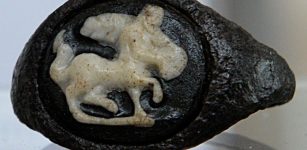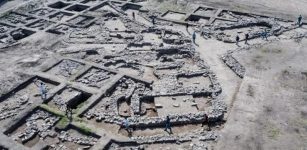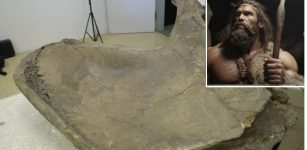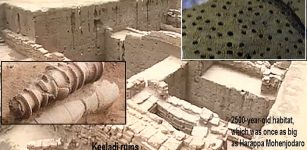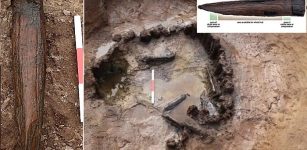Well-Preserved Fragments Of Epetion’s Wall Discovered At The Hellenistic Site Of Stobreč, Near Split, Croatia
Conny Waters - AncientPages.com - A team of archaeologists led by Dr. Marina Ugarković from Croatia’s Institute of Archaeology, has uncovered the remains of an ancient Greek settlement in Stobreč, near Split.
Excavation site. Image credit: Ministry of Culture of Croatia
The discovery includes well-preserved walls approximately 40 meters long that once enclosed a Hellenistic community known as Epetion (Epetium), and was located in the center of modern Stobreč.
"These are impressive archaeological finds, including a Greek rampart about seventy meters long, which in some parts is higher than three meters," informed archaeologist Dr. Marina Ugarković, the head of protective archaeological research from the Institute of Archaeology.
Archaeologist Ugarković underscored the recent notable archaeological discoveries, highlighting a Greek rampart that extends approximately seventy meters in length. In certain sections, this structure reaches heights exceeding three meters.
She explained that this discovery is highly significant, as it represents the best-preserved Greek rampart in Croatia. It holds a status comparable to other ancient archaeological finds around the world, highlighting its monumental importance.
Founded as Epetium, Stobrec has been settled since the classical antiquity founded as an Ancient Greek colony on the Illyrian coast. The largest body of recorded ancient history in the vicinity of Stobrec is associated with the development of Diocletian's Palace, now within the present day city of Split.
Diocletian, who was Roman emperor from 284 until his abdication in 305, founded this palace upon his retirement as Roman Emperor.
During the research led by Dr. Ugarković, it was discovered that the remains of additional structures within the ancient settlement of Epetion were explored for the first time. These structures date from various periods, from prehistory through the Hellenistic and Roman eras to late antiquity, specifically early medieval times.
Excavation site. Image credit: Ministry of Culture of Croatia
Marina Ugarković said that the research on this layered site has uncovered material evidence for the first time, indicating that the settlement was active much earlier than previously believed.
The earliest artifacts discovered date back to the Middle Bronze Age, around the 16th and 15th centuries BC.
Conservators and archaeologists Silva Kukoč and Ivica Pleština from the Ministry of Culture and Media highlighted the site's importance to Minister Obuljen Koržinek. They noted it is registered as an area with potential finds, leading to ongoing archaeological research, as the minister stated to the media.
Further research of the site and planning for its protection and presentation have been announced.
“We have been following this topic for several months, and colleagues from the Directorate for the Protection of Cultural Heritage in Zagreb, as well as from the Split Conservation Department and the Archaeological Museum, are continuously monitoring the research because everyone believes that it is an extremely interesting site", the Minister Obuljen Koržinek emphasized.
Interestingly, the ancient site of Epetium has primarily been identified through historical records that reference it alongside Tragurium and Salona as Greek trading centers.
The initial excavations on the northern coast of Stobreč were conducted by Mladen Nikolanci, an archaeologist from the Archaeological Museum in Split, and Dr. Aleksandra Faber from the Institute of Archaeology in Zagreb, during 1969 and 1973.
Their efforts led to the discovery of a city wall.
See also: More Archaeology News
In 2012, Dr. Marina Ugarković from the Institute of Archaeology further investigated a probe at the site of a Hellenistic rampart, continuing research into this historically significant area.
Research conducted by the Institute of Archaeology in Zagreb contributed much to discovering a megalithic building featuring double doors. This finding suggests that the site extends north of the ramparts towards the seashore, offering new hypotheses regarding the expansion of this Hellenistic city.
Written by Conny Waters - AncientPages.com Staff Writer








